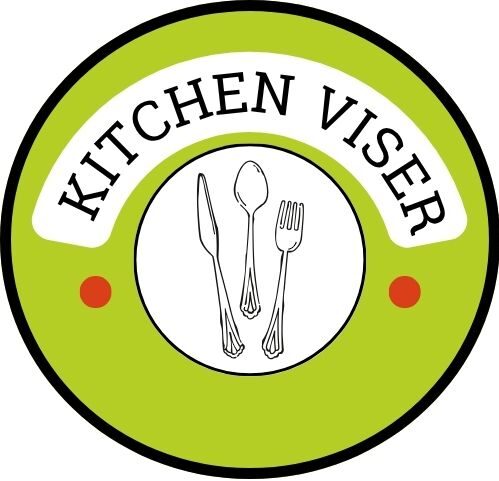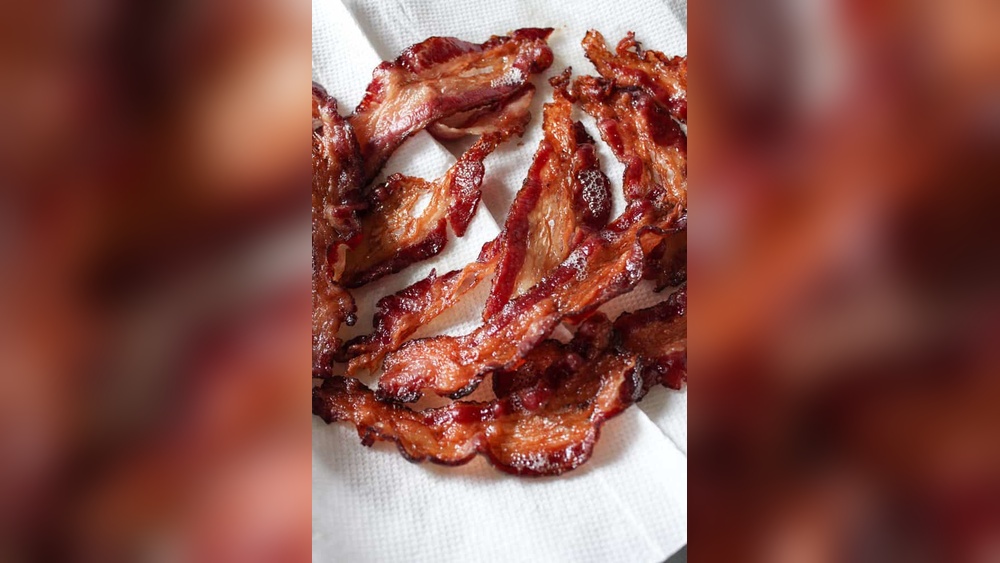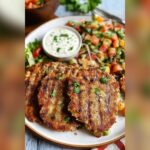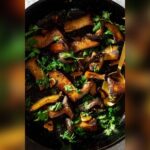Are you ready to add a bold twist to your breakfast or snack time? Cooking beef bacon is easier than you might think, and it offers a rich, hearty flavor that’s quite different from traditional pork bacon.
Whether you want to enjoy it crispy, chewy, or somewhere in between, knowing the right cooking methods will help you get perfect results every time. In this guide, you’ll discover simple steps and helpful tips to cook beef bacon just the way you like it—whether on the stove, in the oven, or even on the grill.
Keep reading, and you’ll soon master how to bring out the best taste and texture in your beef bacon!

Beef Bacon Basics
Beef bacon is made from beef belly or brisket. It tastes different from pork bacon. It has a rich, meaty flavor and is usually thicker and chewier. Pork bacon is fattier and sweeter. Beef bacon has less fat, so it cooks faster and can get tough if overcooked.
Cooking beef bacon is similar to pork bacon. You can pan-fry, bake, or grill it. Since it has less fat, watch it closely. It may need less cooking time to stay tender. Beef bacon’s strong flavor makes it a great choice for those who want a hearty, beefy taste.

Preparing Beef Bacon
Choose fresh beef bacon with a deep red color and good marbling. Avoid bacon that looks pale or has an odd smell. Check the expiration date to ensure freshness. Quality beef bacon should feel firm but slightly flexible.
Before cooking, pat the bacon dry with paper towels. This helps the bacon crisp better. Let it sit at room temperature for 10-15 minutes. If frozen, thaw it slowly in the fridge overnight. Avoid thawing at room temperature to keep it safe.
Cooking Methods
Pan-frying is great for getting beef bacon crispy. Use a skillet on medium heat and add a little oil. Cook the bacon, turning it often to avoid burning. Watch closely; beef bacon can cook faster than pork bacon. This method keeps the bacon crunchy and tasty.
Baking helps cook beef bacon evenly. Place strips on a baking sheet lined with foil. Bake at 400°F (200°C) for 12-15 minutes. This method is less messy and lets you cook many slices at once. The bacon cooks through without overcooking.
Grilling adds a smoky flavor to beef bacon. Lay the strips on the grill over medium heat. Turn them carefully to avoid falling through the grates. This method gives the bacon a unique taste, perfect for barbecues or outdoor meals.
Air frying is a quick way to cook beef bacon. Place strips in the air fryer basket in a single layer. Cook at 360°F (182°C) for about 8-10 minutes. This method saves time and creates crispy bacon with little oil.
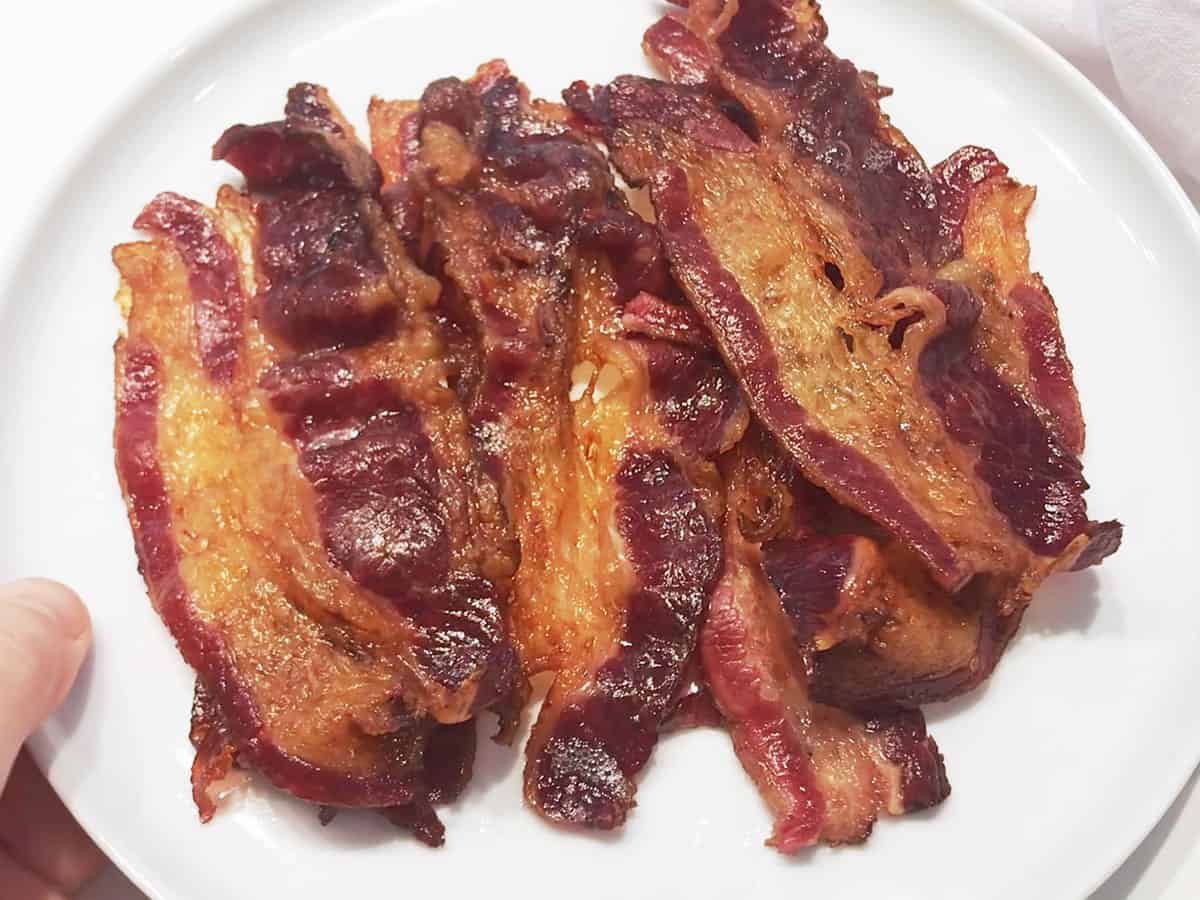
Tips For Perfect Texture
Avoid overcooking to keep beef bacon tender. Cook on medium heat and watch closely. Beef bacon cooks faster due to leaner fat content. It needs less time than pork bacon to avoid becoming tough and dry.
Manage the fat by trimming extra pieces if needed. This helps control grease and creates an even texture. Use a paper towel to soak up excess fat while cooking.
Use beef bacon drippings for added flavor. Drippings can enhance soups, sautés, or vegetables. They add a rich, beefy taste that complements many dishes.
Flavor Enhancements
Seasoning ideas for beef bacon include simple salt and pepper or bold spices like smoked paprika and garlic powder. A pinch of brown sugar adds a touch of sweetness that balances the savory flavors. For extra zest, try chili flakes or cumin for a spicy kick. Marinating beef bacon briefly in soy sauce or Worcestershire sauce can enhance its rich, meaty taste.
Pairing with complementary foods boosts the flavor experience. Crisp eggs and creamy avocado work well for breakfast. Fresh tomatoes or pickles add a nice tang. Sandwiches taste great with crunchy lettuce and mild cheese. Serving beef bacon alongside hearty beans or roasted vegetables creates a filling meal. Simple sides like toast or mashed potatoes also pair nicely.
Serving Suggestions
Beef bacon pairs well with many breakfast classics like eggs, toast, and pancakes. Its rich, smoky flavor adds a nice touch to simple dishes. Try serving it alongside scrambled eggs or a fluffy omelet for a hearty meal.
For creative meal ideas, use beef bacon in sandwiches or wraps with fresh veggies. It also works great crumbled over salads or mixed into pasta dishes for extra taste and texture. Adding beef bacon to baked potatoes or casseroles can make meals more flavorful.
Frequently Asked Questions
Do You Cook Beef Bacon The Same As Pork Bacon?
Yes, cook beef bacon like pork bacon by pan-frying, baking, or grilling. Watch closely to avoid overcooking. Beef bacon is leaner, cooks faster, and has a chewier texture with a stronger, beefy flavor.
What Do You Do With Beef Bacon?
Cook beef bacon by pan-frying, baking, or grilling until crispy. Avoid overcooking to keep it tender. Use drippings for flavor in recipes. Its leaner texture offers a rich, beefy taste distinct from pork bacon. Serve as a hearty breakfast side or in sandwiches and salads.
Does Beef Bacon Taste Like Bacon?
Beef bacon tastes similar to pork bacon but has a richer, beefier flavor and a chewier texture. It is less sweet and leaner.
How Do You Know Beef Bacon Is Done?
Beef bacon is done when it turns crispy, dark brown, and reaches an internal temperature of 160°F (71°C). Cook until edges curl and fat renders fully. Avoid overcooking to keep it juicy and tender.
Conclusion
Beef bacon offers a tasty alternative to pork bacon. Cook it carefully to avoid toughness. Use pan-frying, baking, grilling, or air frying for best results. Remember, beef bacon cooks faster because it has less fat. Enjoy its rich, meaty flavor and chewy texture.
Try different methods to find your favorite way to cook beef bacon. Simple steps can bring great flavor to your meals. Give beef bacon a try and enjoy a delicious change.

Yes, working as , Food Blogger and Product Reviewer for last 6 years. Here you will get amazing deals for Smart kitchen products. I am your best source for the latest update in cooking trends. I provide insightful articles, reviews, and analysis on cutting-edge kitchen gadget. My mission is to empower readers with the knowledge they need to stay ahead in a rapidly evolving coking world. Join me as we explore the future of food technology and how it shapes our lives today and tomorrow.
